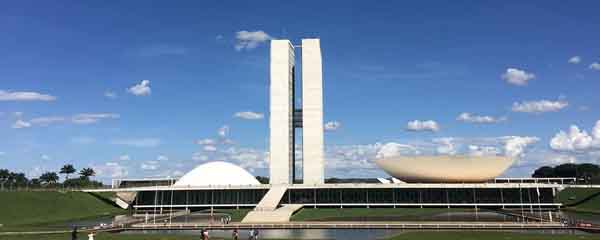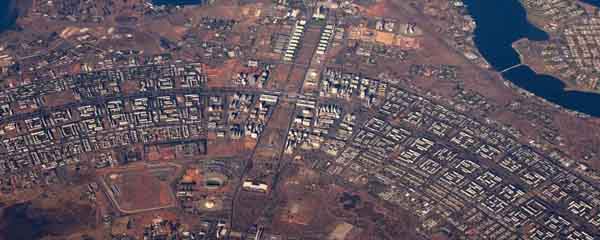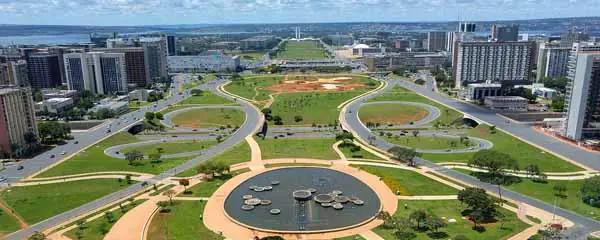Blog
All About Brasília: The Capital City of Brazil
- Thursday April 14th, 2022
- Posted by: Amanda Ennes
- Category: Brazil

Many foreigners have the idea that Rio de Janeiro or São Paulo is the capital of Brazil. However, that is not true. The capital city of Brazil is Brasília, located in the Centre-West region of the country. It is a planned city established in 1960 and the third-largest city in Brazil.
With a population of over 3 million people, Brasília houses 133 embassies, the National Congress, the Supreme Federal Court, the presidential office and residence, and many other governmental buildings. The city is also divided into numbered blocks as well as sectors for specified activities, such as the Hotel Sector, the Banking Sector, and the Embassy Sector.
Table of Contents
ToggleHistory
Rio de Janeiro served as the capital of Brazil until 1960. However, the government felt that having a capital city on the coast was not a very good idea. Firstly because a coastal capital left the country vulnerable to foreign attacks from the sea. Secondly, there was the need to bring the capital closer to other interior areas of the country, which were far away from the coast.
Further reading: 11+ Interesting Facts About Brazil.
Furthermore, Rio had also grown far too crowded for a capital. Meanwhile, only a few thousand people occupied the central region of Brazil. Moving the capital to a central region would mean encouraging the occupation of other territories in the central highlands.
In the 1955 Presidential Election, people elected Juscelino Kubitschek on a platform based on rapid economic development, driven by his slogan ‘fifty years in five’. His Plan of Goals was the highlight of his campaign. He aimed to open up and modernize the Brazilian economy and finally move the capital.
Watch teacher Deise’s video on the electoral system in Brazil here.
Background
The new capital of Brazil would be located in a special federal district, carved out from the state of Goiás in Brazil’s Centre-West region. This area was located in the highlands of Brazil, within Cerrado — a savanna-like biome. It had been essentially an agricultural dead zone, mostly limited to beef production.
Read more about the main biomes in Brazil in our blog post: Biodiversity in Brazil: a Megadiverse Country.
Moving the country’s capital to the Cerrado attracted many to the region, with the surrounding state of Goiás alone growing nearly three times from 1950 to 1980.
Construction
Brasília was a planned capital city created virtually from scratch.
With an ideal place already selected, a public contest was held in 1956. Various Brazilian architects and city planners designed ideas of what the city would look like. The jury eventually selected Lúcio de Costa’s plan for the city. The plan showed the main avenues forming an irregular cross shape resembling that of an airplane. Moreover, the residential area would be located along the wings and the commercial and governmental buildings along the body. Brazilian architect Oscar Niemeyer was responsible for designing most of the buildings in Brasília. Furthermore, Roberto Burle Marx was in charge of landscaping.
The construction of the new capital, however, had mixed reactions. Supporters praised the construction of Brasília as a symbol of Brazil’s coming of age. On the other hand, critics saw the construction as political maneuvering, which would not solve issues such as poverty and corruption.
Nonetheless, the first part of the construction of the new capital of Brazil only took around four years. Brasília was officially established as the new capital of Brazil on April 21, 1960.
Brasília: The Capital City of Brazil
Today, the Federal District that houses Brasília is the third-largest metro area in Brazil, with a population of 4.2 million. In 1987, UNESCO included Brasília on its World Heritage List because of its architectural work and distinctive urban plan.
Moreover, Brasília houses all three branches of Brazil’s federal government: executive, legislative, and judiciary. Among the building located in Brasília are the Planalto Palace headquarters of the Brazilian presidency, the National Congress, and the higher courts of justice.
The world’s largest permanently hoisted flag is also located in Brazília. The Brazilian flag measures 286 square meters and is hoisted on a 100-meter mast.
What to do in Brasília: The Capital City of Brazil
If you ever visit Brasília, the capital of Brazil, do not forget to visit these places:
- Praça dos Três Poderes: The Three Powers Plaza. It is a plaza in which is located Palácio do Planalto (the presidential office); the National Congress; and the Supreme Federal Court.
- Palácio Itamaraty: the headquarters of the Ministry of Foreign Affairs.
- Palácio da Alvorada: the official residence of the President of Brazil.
- Juscelino Kubitschek bridge: a steel and concrete arch bridge across Lake Paranoá.
- Lake Paranoá: a manmade lake with various entertainment activities around it, such as restaurants, shopping malls, gyms, nightclubs, clubs, and more.
- Metropolitan Cathedral of Brasília: a Roman Catholic cathedral serving as the seat of the Archdiocese of Brasília. Brazilian architect Oscar Niemeyer was responsible for designing it. People often consider the cathedral to be his masterpiece.
- Botanical Garden of Brasília: showcases plenty of the vegetation from Cerrado.
- Brasília National Park: a park with an area of 423.83 square kilometers with Cerrado or savanna trees.

Caminhos Language Centre is the largest and most exciting Portuguese school in Rio de Janeiro, Brazil. We have an excellent infrastructure, over 15 experienced Brazilian teachers, and a friendly multilingual support staff. We are the only school in Brazil able to offer Portuguese group courses throughout the year on 10 different levels. Moreover, our school also offers more than just Portuguese lessons for foreigners, we offer you the complete Rio de Janeiro experience. Every day we organize 100% free and fun activities for you to socialize and practice your Portuguese. We can also help you with a student visa for Brazil and accommodation in Rio de Janeiro.


 Deutsch
Deutsch Français
Français Português
Português Español
Español


